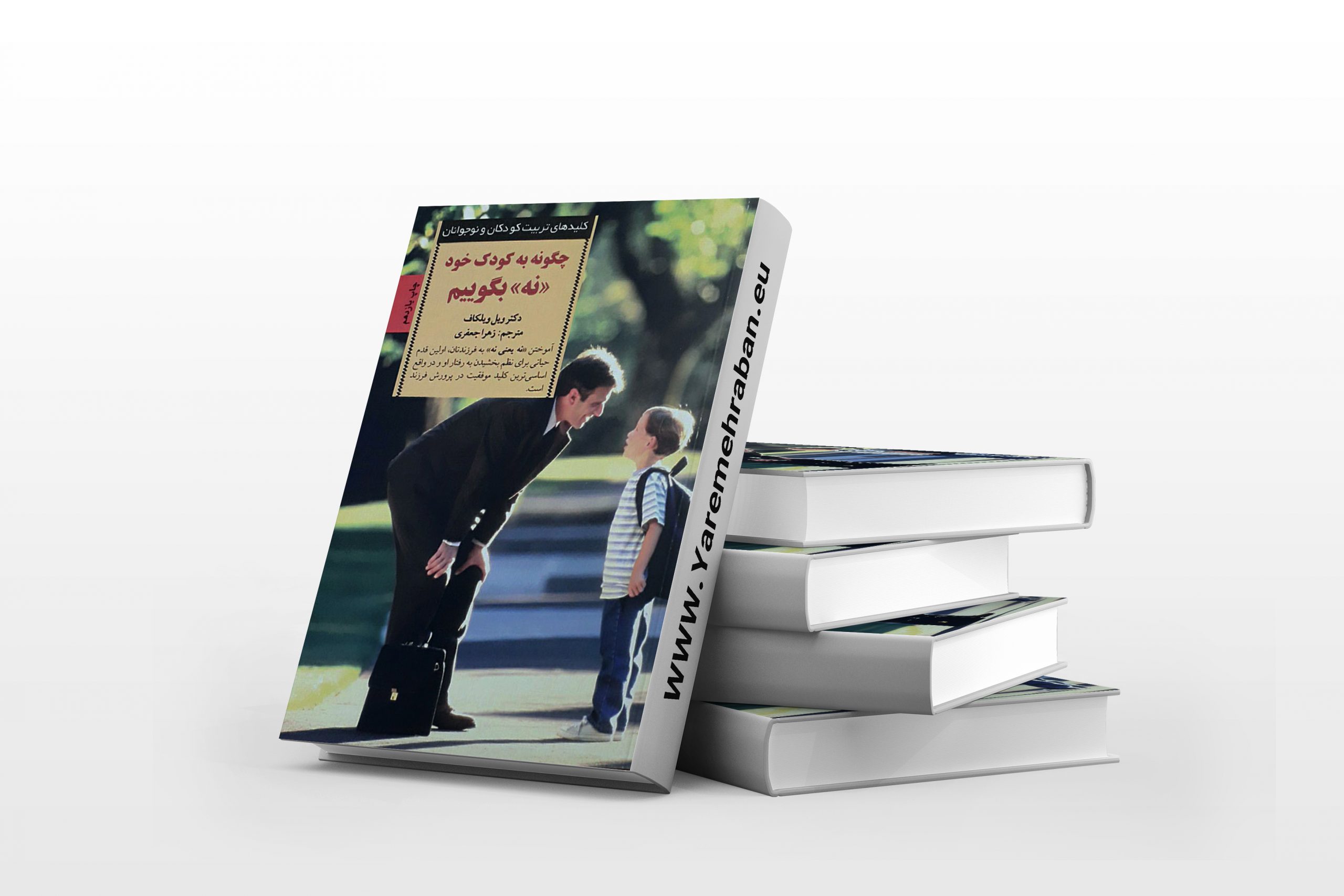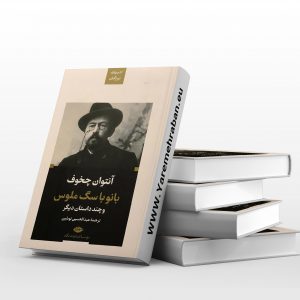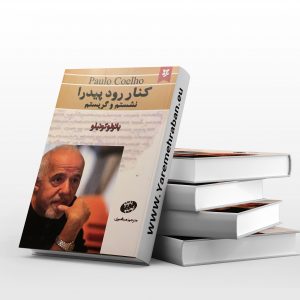Description
How to Say No to Your Child is written by Dr. Will Wilkoff (1944). This book is a guide to preparing a safe, rational and efficient disciplinary program for a child from nine months to three years old.
Each of us has a child with a unique set of personal strengths and weaknesses. Not all children have the same personality pattern, and each of us should use an educational method appropriate to our child’s age and personality. The variety of temperament and temperament of the child and the personality of the parents is so great that no writer can offer effective suggestions for all situations as well as a suitable plan and solution for all parents.
In How to Say No to Your Child, you are not faced with a very large, comprehensive, and complex plan and plan, all the difficult details of which must be worked out from beginning to end in order to be successful.
The contents of this book are a collection of theories collected over thirty years from thousands of parents who have succeeded or failed in controlling and managing their child’s behavior. The chapters of this book have a logical sequence, but there is no problem in studying it based on individual and family priorities.
In How to Say No to Your Child, you will find the tools you need to plan an effective and appropriate way to control your child’s behavior; From getting into the habit of going to bed earlier at night to considering age-appropriate restrictions or how to use the break method and ….
What you read in How Not to Tell Your Child is not based on hypotheses or theories, but on real experiences. The author has tried to express in this book what he has experienced and understood.

When the baby is in infancy, most things are in peace and security for the parents. He has not yet entered the stage of discovering the world around him, but when the child gradually begins to touch the objects and the environment around him, until he experiences sitting and walking, the parents’ worries begin. Strange behaviors such as shopping excuses, excessive naughtiness at bedtime, throwing things, handling dangerous objects, and even child misconduct are challenges that are not complete.
Many parents use force and punishment to correct their toddler’s misbehavior, but they still do not succeed. They like to raise a polite and talkative child, but if the child has learned some bad habits, it is still not too late to raise them properly. It is enough to use the methods of principled training with patience and, most importantly, a proper planning. The book How to Say No to Your Child gives parents the keys to proper parenting so that they can succeed in raising their children with practical experiences and strategies.
How to Say No to Your Child is a handbook for parents looking for an effective disciplinary plan to raise their nine- to three-year-olds. The author of the book, William Wilkoff, shares a set of simple and practical strategies for dealing with a variety of disciplinary issues in young children. In this book, Wilkoff explains how parents can anticipate and overcome educational setbacks. Evaluate your expectations and strengthen the child’s sense of self-control and well-being.
William Wilkoff has written How to Say No to Your Child in simple, concise language so that parents and educators can read and use it in less time. In this book, the author reminds parents that teaching your child “no means no” is the first step in regulating their behavior. This method is one of the basic keys to success in raising a child.
In writing How to Say No to Your Child, William Wilkoff also uses the theories, successful and unsuccessful experiences of parents who have been in contact with them to make the material more tangible and real to readers.
An overview of how to say no to your child
The book “How to Say No to Your Child” teaches parents in 16 sections how to succeed in managing and controlling the child’s behavior with principled and continuous methods.
At first, William Wilcoff talks about the importance of saying no. Everyone has strengths and weaknesses, so the educational model for each child should be according to his age and personality, so it is not possible to apply a single and specific program to all children, but there are similar conditions and situations for most parents, almost all of them. Have experienced. In this book, an attempt has been made to use materials and solutions that can be used by most children.
In How to Say No to Your Baby, the author explains that the baby is able to understand what you mean by saying no from the moment he or she begins to crawl on his or her toes. Compared to puberty, it is much easier to say no to a toddler because a two-year-old understands their threats and promises as much as he or she believes in his or her parents. If the parents have the power of word stability, their utterances and words will be effective when the child reaches adolescence, so saying no to the child from childhood is especially important.
The important issue with which William Wilkoff begins his speech is the reason for the difficulty in saying no. He explains that parents’ interest in their children makes it difficult for them to say no. It is a natural human instinct not to say no to the people he loves, but the important point is that if parents are not able to say no, they will have difficulty raising their child. The author goes on to explain that one should not be afraid to say no, but having a plan and application plan can help parents to manage and control their behavior.
After the importance of saying no and explaining why this is difficult for parents, the author examines and analyzes the reasons for the child’s misbehavior in the living environment and explains when the child’s behavioral problems occur and what role parents play in causing the behavior. . He asks parents to write a list of behaviors that are beyond their child’s control, such as behaviors that are not correct with punishment. It is better for them to be a role model for the child.
In the next steps, a plan and outline for creating discipline and punishment appropriate to the child’s personality will be provided to the parents. Restrictions that control the child’s misbehavior in different situations. Important points in threatening and controlling the child’s behavior outside the home and possible actions if the warnings and threats of the parents were not effective, are among the topics that are discussed in different sections of the book.
Book chapters with titles such as “Practical application of” no “and other methods of controlling and managing behavior”, “The art of setting boundaries”, “How to use interruptions to be effective”, “Threats and warnings”, “Homogeneity and “Stability”, “Implementing the program”, “How to say ‘no’ when your child is sick”, “Discipline and kindergarten”, “Delayed learning to use the toilet” help parents, educators and caregivers to step by step using Different techniques can control the child’s behavior in necessary situations.
The last section of the book, “Conclusion: Plan C,” explains to parents if Plan B continues if their child misbehaves and the efforts are ineffective. Map B is a re-reading of the book. If the parents used the contents of the book and patiently did not see any change in the child’s behavior, “William Wilkoff” suggests map C. Plan C is to consult a pediatrician, psychiatrist or child psychologist as the child may have a learning disability, depression or other problems.
The book’s author, William Wilkoff, concludes with a positive and motivational discussion of “How to Say Yes to Your Toddler.” He tells parents by example that in most cases it is necessary to say “yes” in order for the upbringing of the child to be interesting for both the parents and the child.
Dr. William Wilcoff; Physician and author
Dr. William J. Wilkoff is a pediatrician. He was born in 1944 and now lives in Canada. Dr. Wilkoff received his medical education from Harvard Medical School and his postgraduate studies at Duke University Medical Center and Children’s Hospital in Boston. He has been a pediatrician for 25 years and has written for child publications and websites in the field of child and adolescent education.
Dr. William Wilcoff has also authored four books on child rearing. He wrote the book “How to Say No to Your Child” in 2003. This book has been translated into Persian by Zahra Jafari and published by Saberin Publications. The book “How to Say No to Your Child” has been reprinted for the twelfth time in Iran.
In a part of the book, we read how to say no to our child
When things go awry: Some very important and extraordinary behaviors, of course, need to be discussed specifically. In this case, the basic principles of behavior control remain in place and still apply, but in times of turmoil, you may have trouble remembering these principles. The better you understand these unpleasant things, the easier and more effective it will be for you to respond wisely and logically, as well as to react to them.
Screams: This outburst of anger may be just a scream or a shout or a roll on the floor, a kick, a slamming of the door, and a strange show.
Watching these crunches is unpleasant and reminds me of a seizure; Because the child is barking, lacks intellect and logic. Cramping may be accompanied by sneezing and crying, ending with deep sleep after a seizure, and like seizures, they are more likely to occur when the child is very tired. Fortunately, unlike seizures, cramps are not a threat to your baby’s health.
1- Introducing the book on YouTube
2- Introducing the book in Aparat














Reviews
There are no reviews yet.